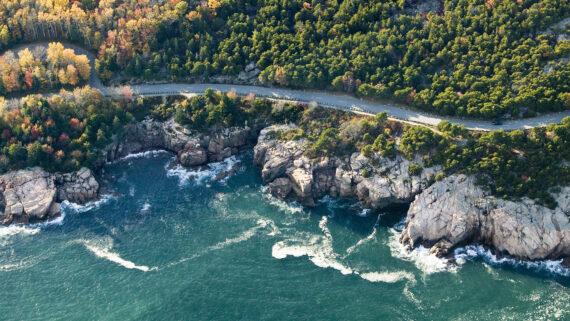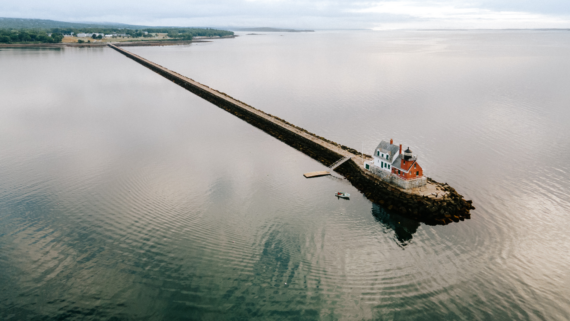
Rare Rocks: Inside Jupiter Island’s One-of-a-Kind Blowing Rocks Preserve
With over five decades of care and protection, Jupiter’s Blowing Rocks Preserve is considered one of The Nature Conservancy’s proudest achievements – and most fascinating stretches of restored barrier island habitats in all of Florida.
In a region studded with miles of sandy beaches, the unique craggy limestone shore at Blowing Rocks Preserve on Jupiter Island, located a mere four miles north of Jupiter Beach Resort & Spa, looks as though it belongs in Acadia National Park in Maine. But that isn’t all that makes this 73-acre swath – with over 50 years of protection by the Nature Conservancy – so special. Cristin Krasco, Blowing Rocks Preserve Manager, elaborates on its unique ecosystems and endangered plants and animals that make your visit a must.

Name Game
Blowing Rocks Preserve is named for its iconic Blowing Rocks, formed by ancient Anastasia limestone. “The Preserve’s Blowing Rocks are unique – there is more exposed Anastasia limestone along this beach than any other location on the Atlantic Coast,” says Krasco. “When conditions are just right, during extreme high tides, storms or on windy days, waves break against the rocks and force plumes of saltwater up to 50 feet skyward, putting on a spectacular show of incredible bursts of water and spray.”

Beyond the Rocks
Founded in 1969, Blowing Rocks is a productive sea turtle nesting ground and the most visited of the Nature Conservancy’s preserves in the country. “It’s a treasured escape to nature and a favorite spot for beachgoers, anglers, photographers, and the local community,” says Krasco. “Our preserve spans across the barrier island from the Atlantic Ocean to the east to the Indian River Lagoon to the west, giving us incredibly beautiful ocean sunrises and lagoon sunsets.”

To Protect and Serve
Many species of animals – including several imperiled ones such as the state-threatened gopher tortoise, wood stork, least tern, and osprey – call Blowing Rocks home. “We also see federally endangered green and leatherback sea turtles, federally threatened loggerhead sea turtles, West Indian manatee, and piping plover,” says Krasco, adding that the Conservancy has counted over 15,000 turtle nests since 1989. “Sea turtles favor Blowing Rocks Preserve for many reasons. The preserve beach is dark at night, unlike the surrounding areas of development, and is a preferred and successful nesting area for turtles.”

Not Just Fauna, But Also Flora
“The preserve is home to restored native coastal ecosystems including tropical hardwood hammock, dunes, and mangroves,” says Krasco. “Blowing Rocks Preserve is located at the intersection of the cooler, temperate climate zone and the warmer, subtropical climate zone. This results in increased biodiversity on the preserve, both on the land and in the water, because it is home to temperate species at the southernmost end of their habitat range, and tropical species at the northernmost end of their habitat range.” Krasco adds that at Blowing Rocks you’ll see unique subtropical hardwoods, grasses, and flowering plants, including gumbo limbo trees, Jamaica caper, sea grape, wild coffee, railroad vine, red, black and white mangroves, and sea oats – just a few of the 250-plus plant species found here, as well as imperiled plants like the state endangered giant wild pine bromeliad and beach peanut.”
Where to Stay Jupiter Beach Resort & Spa




